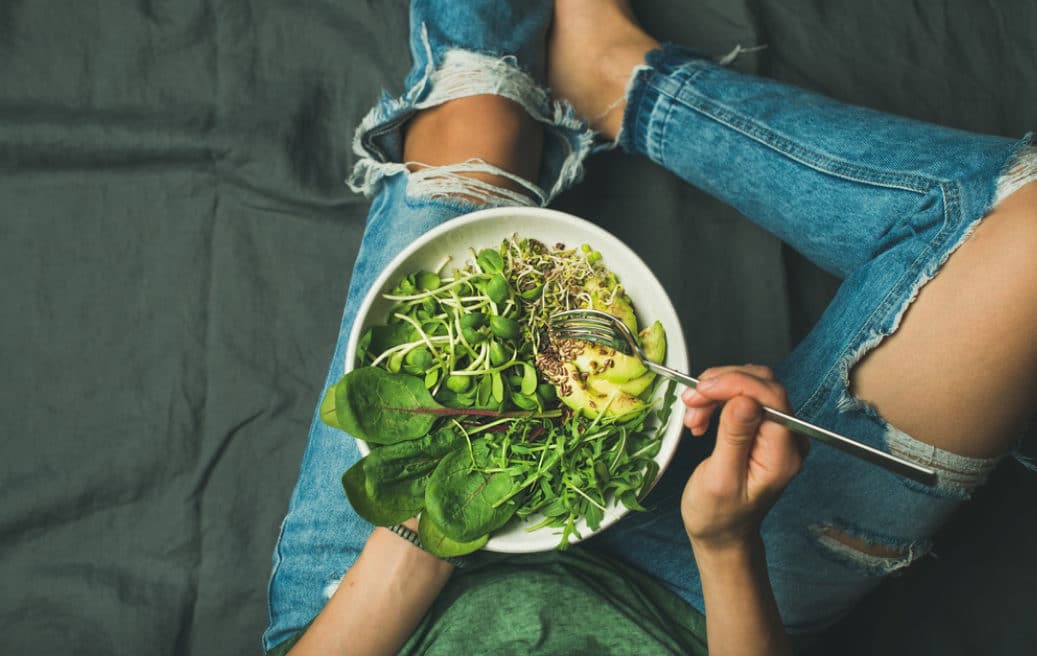
You want to lose weight. What advice do you hear? “Just eat clean.” Haven’t you seen and heard about clean eating everywhere… from your FaceBook feed to the celebs in People magazine to new cookbooks on Amazon?!
Indeed, ‘eating clean’ is quite the trend. But what does clean eating actually mean?
What is Clean Eating?
Clean eating is a way of eating, a lifestyle really. Though it is a type of a diet, it’s a type that does not require counting and reducing calories or emphasizing sacrifice on your part.
Clean eating is not a new concept in healthy eating; it actually dates back to the 1960’s ‘natural food’ health movement when emphasis was placed on losing weight while eating healthy and becoming healthier. Put simply, eating clean revolves around the idea of being more mindful of the food’s pathway between its origin and your plate. That’s a pretty deep concept, so let’s explain in detail.
Clean Eating is more of a lifestyle than a diet
The ‘eating clean lifestyle’ is a way to approach how you eat and what you choose to put in your body. It’s about taking a conscientious approach to what foods you eat. The focus is on the quality of the foods being consumed and the benefits (or harms) these foods offer your overall health.
Clean Eating is about eating ‘whole’ or ‘real’ foods
‘Whole’ or ‘real’ foods are foods that have not been modified in a lab or in the manufacturing process. This means the food has no added sugars, preservatives, dyes, fats or salt, which are often added to add shelf life or for added flavor or to enhance the food in some other way.
What are some examples of ‘whole’ or ‘real’ foods?
‘Whole’ or ‘real’ foods (https://www.webmd.com/food-recipes/features/the-whole-foods-diet#1) are foods that are as close to their natural state as possible. It’s more like the way the foods were a hundred years ago, before our technological advances and age of convenience. But let’s be realistic. We’re not going to eat like cavemen, so let’s take a look at some practical, real life examples.
Clean Eating is about limiting processed foods and avoiding ultra-processed foods
Realistically, eating clean means choosing minimally processed foods with as few ingredients on the label as possible. It’s not so extreme to mean you must eat everything raw and straight out of the ground. Take a look at some examples and use them as guidance.
Unprocessed foods:
Minimally processed foods:
Ultra processed foods:
Warning: Common sense required. As you strive to make smart eating choices, please note that processing, in and of itself, is not always bad. Pasteurizing is a form of processing milk that provides us with safety. Sometimes processing means altering the consistency or taste to make it more appealing and is done in a healthy way, as with instant oatmeal.. We can all agree that though milk and instant oatmeal are processed, they are not on par with sodas or cheetos.
Your 7-Step Guide for Eating Clean
The best way to control the food on your plate is to shop for it and prepare it yourself. Generally, restaurant food tastes so good because of added salt, sugar and unhealthy fats. When you cook at home, you can control the salt, sugar and flavors that go into your meals.
Look for labels with limited ingredients. Ask yourself if you would add this to your food if
you prepared it at your home. Look for added sugars. Make sure the sodium content is
as low as possible. Beware of words like “modified” and “hydrolyzed.” Watch for
ingredients ending in “-ose” as this means some kind of sugar.
Remember this list: fresh fruits and vegetables, nuts/seeds, whole grains, lean proteins,
low-fat dairy without hormones, and dried beans/legumes.
General rule: if they come in a box or a jar, stay away. These foods are usually high in
sugars & salt, low in fiber and high in fat. You don’t have to avoid these foods
altogether. Make your salad dressings, cookies, soups and mac n’ cheese from scratch.
Include all food groups. Make sure the foods you choose contain the right amount, kind
& quality of protein, carbohydrates and fat. Don’t forget fiber.
Avoid unnecessary additives.
Drink 2-3 liters of water each day. Avoid sodas. Avoid fruit juices. Eat the fruit instead
of consuming fruit juices. Fruit juices do not contain fiber and contain more sugars and calories, and less nutrients, than a piece of fruit.
Get started now eating clean!! It’s a healthy lifestyle and should lead to a leaner, stronger you.
If you want to learn more about healthy eating and other ways to lose weight, contact the body shaping experts at Sculpt Away in San Antonio at 210-227-3051 or visit www.SculptAway.com.
We’re here to help. Schedule a consultation today to discuss treatment options
and look your very best.